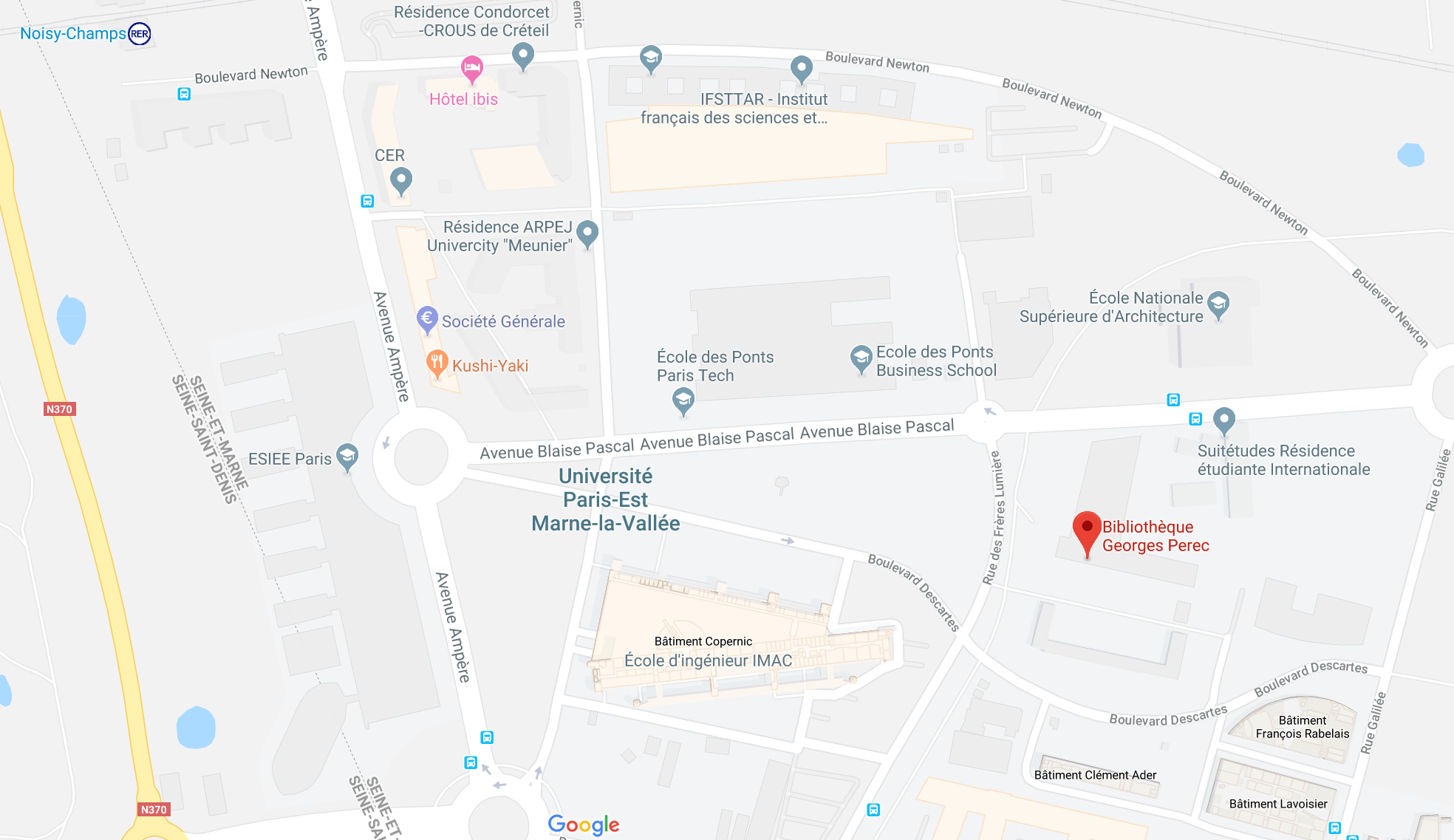December 4, 2018: A one-day meeting of the Bézout Labex is organized on the site of Marne-la-Vallée. It will be the opportunity to:
- briefly present the past and future actions in the Labex, at the occasion of the change of head of the Labex (still to be confirmed by ANR),
- welcome three new members of the research units of the Bézout Labex: Claire Lacour, Yohann De Castro, and François-Xavier Vialard, who will all give a talk,
- see an overview of ongoing research from the research areas of the Labex.
How to come
The meeting will take place in the auditorium of bibliothèque Georges Perec:

Program
10:30 Philippe Loubaton and Éric Colin de Verdière (introduction)
10:50 François-Xavier Vialard (slides)
11:35 Olivier Guédon (high-dimensional phenomena)
11:50 Renaud Marlet (smart cities)
12:05 lunch (registration is closed)
13:45 Claire Lacour (slides)
14:30 François Bouchut, Bernard Lapeyre, Béatrice de Tilière (deterministic and stochastic models) – (slides)
14:45 Frédéric Meunier (slides)
15:00 Stéphane Sabourau (images and geometry) – (slides)
15:15 break
15:45 Yohann De Castro (see below) – (slides)
16:30 the end
Abstracts
(Most talks are likely to be in French.)
François-Xavier Vialard (LIGM): An overview of unbalanced optimal transport: theory and applications
In this talk, we present an equivalent of the L2 Wasserstein metric to the space of positive Radon measures. After the presentation of standard optimal transport, static and dynamic formulations, we introduce the new model and show the corresponding static and dynamic formulations. Then, we briefly present the link with a fluid dynamic model and show applications in medical imaging. Last, we present a new similarity between measures, based on regularized optimal transport.
Claire Lacour (LAMA): Méthode de comparaison pénalisée pour la sélection d’estimateurs
En statistiques ou en apprentissage, il est courant que les prédicteurs ou les estimateurs dépendent d’un paramètre à ajuster au mieux par l’utilisateur. Par exemple, on cherche à retrouver la distribution des données, et on fournit une densité approchée avec un paramètre de lissage. Ou encore, on produit une classification des données, mais qui dépend du nombre de classes voulues.
On présentera dans cet exposé une nouvelle méthode de sélection d’estimateurs, qui utilise une comparaison pénalisée à l’estimateur de surapprentissage. On présentera des résultats théoriques dans le cas de l’estimation de densité par noyau, ainsi que des simulations numériques.
Yohann De Castro (CERMICS): On Representer Theorems and Convex Regularization
We establish a general principle which states that regularizing an inverse problem with a convex function yields solutions which are convex combinations of a small number of « atoms ». These atoms are identified with the extreme points and elements of the extreme rays of the regularizer level sets. An extension to a broader class of quasi-convex regularizers is also discussed. As a side result, we characterize the minimizers of the total gradient variation, which was still an unresolved problem.
